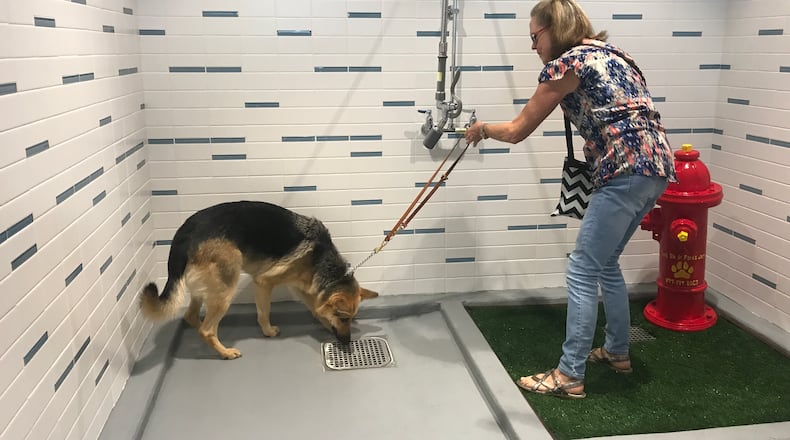Hartsfield-Jackson International Airport has opened "relief areas" for dogs, cats and other service animals on every one of its seven concourses.
The new service animal relief areas were built to fulfill a new federal requirement.
Hartsfield-Jackson already had pet relief areas outside the domestic and international terminals in pre-security areas, including a dog park outside the domestic terminal and a pet relief area outside the international terminal.
But the federal government in 2015 issued a rule saying airports with 10,000 or more passengers boarding planes annually would need to provide wheelchair-accessible animal relief areas for service animals by August 2016. Federal law requires airports that receive federal funds to be accessible to the disabled.
Hartsfield-Jackson took the last couple of years to find space and build the new relief areas. It missed the deadline, but the FAA last year said it would "work with airports on a case-by-case basis" to fulfill the requirement.
The world's busiest airport was "behind some other airports" in offering service animal relief areas, acknowledged Hartsfield-Jackson general manager Roosevelt Council. But it now has the most service animal relief areas of any airport in the United States, after spending $3.2 million to build all seven of the facilities.
"These areas will offer a welcome bathroom break" to those animals, Council said.
The areas will be cleaned three to four times a day and deep cleaned twice a week, said Hartsfield-Jackson director of customer experience and ADA coordinator Steve Mayers.
Dogs and miniature horses are recognized as service animals. Mayers said. But other dogs and cats who are pets or emotional support animals can also use the relief areas.
-- Stay up to date on the latest news on Atlanta airline travel by following Atlanta Airport News Now on Facebook.
MORE:
The new service animal relief areas were built to fulfill a new federal requirement.
About the Author
Keep Reading
The Latest
Featured



